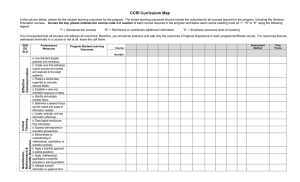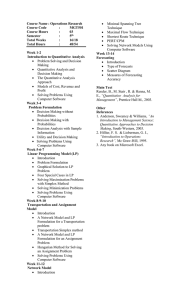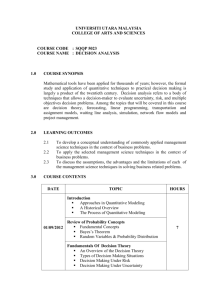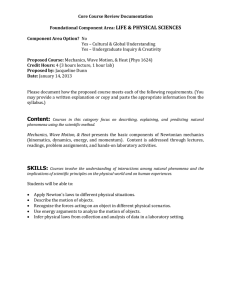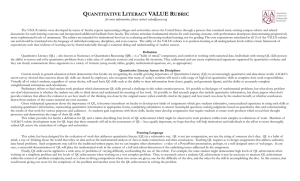Quantitative Business Analysis
advertisement
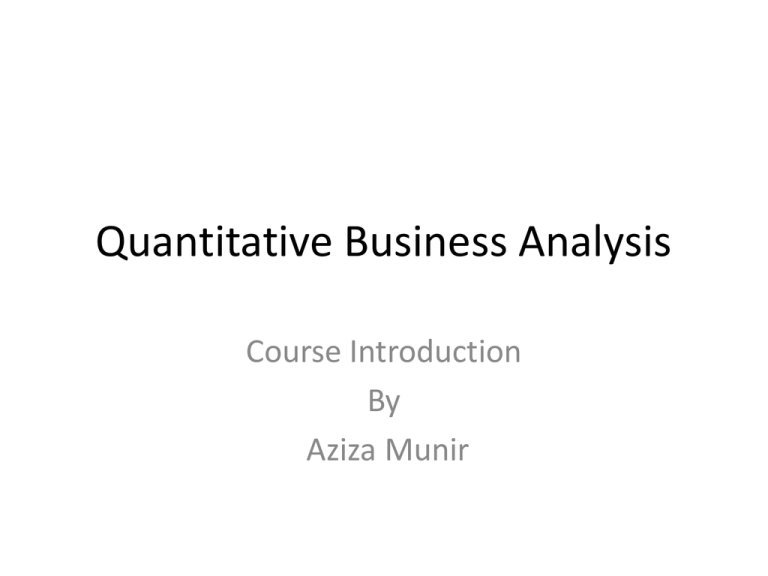
Quantitative Business Analysis Course Introduction By Aziza Munir Course Description • Focus on Data handling and presentation • Analyse the need and importance of collecting data in business and methods to interpret them • Describe, estimates, probability and forecasting environment on the basis of given information • Presentation of numeric data and theoretical interpretations for information and business application Course Objectives • • • • • Data as center of generating information Data gathering techniques Mathematical and statistical interpretations Research techniques Generating useful information Course Methodology • Part 1 Focus on estimates, probability, discrete and continuous, probability distribution, and decision analysis Forecasting on the basis of time series • Part 2 Importance of research in business Techniques, functions and steps Data interpretation and presentation, statistically Lecture 1 Introduction By Aziza Munir Learning Objectives • • • • • • Need and developing model Model types Flow chart of transformational process Model solution and report generation Quantitative methods in practice summary Why Model? To successfully apply quantitative analysis to decision making, the analyst must work with manager or user of the results. When both the quantitative analyst and the manager agree that the problem has been adequately structured, model can be developed and work can begin. Model development • Models are presentations of real objects or situations and can be presented in various forms. Eg. Scale model of an airplane is a representation of real airplane. Similarly child toy truck is a model of real truck. These are physical replicas of objects • Iconic models Model development and types • Second classification includes models that are physical in form but do not have same physical appearance, as object being modeled. Such are known as Analog Models Eg: Speedometer of an automobile, position of needle on dial, thermometer mentioning temperature Model development and Types • Third classification states, representation of a problem by system of symbols and mathematical relationing. • Mathemetical Modeling Eg: Total profit from sales of a product can be determined by multiplying profit per unit by quantity sold. P=10x Flow chart of process of Transforming Model Input to Output Uncontrollable Inputs (Environmental Factors) Controllable Inputs (Decision Variables Mathematical Model Output (Physical Result) Model Solution Production Quantity Projected Profit Total Hours of Production Feasible solution 0 0 0 Yes 1 20 10 Yes 2 30 20 Yes 3 40 30 Yes 4 60 40 yes Report Generation • Solution based on the quantitative analysis of a problem. • Helps in decision making • Report present recommended decision • Manager lies working on report Quantitative methods in Practice • Linear programming • Integer Linear programming • Project Scheduling(PERT/CPM) (Program Evaluation and Review Technique, Critical Path Method) • Simulation • Decision Analysis • Forecasting Summary • • • • Why we need QBA Why Model Types of Models Models in Practice
